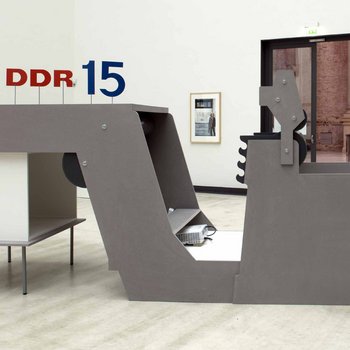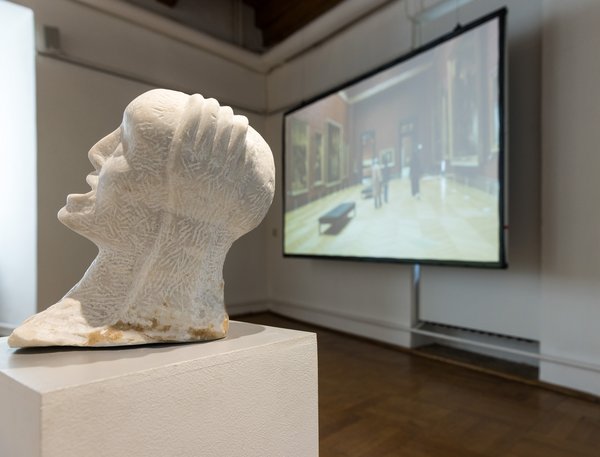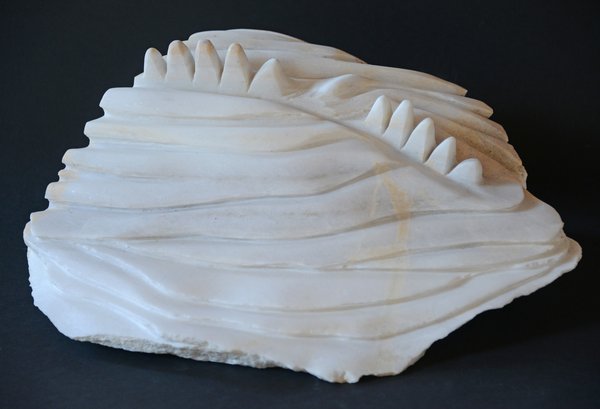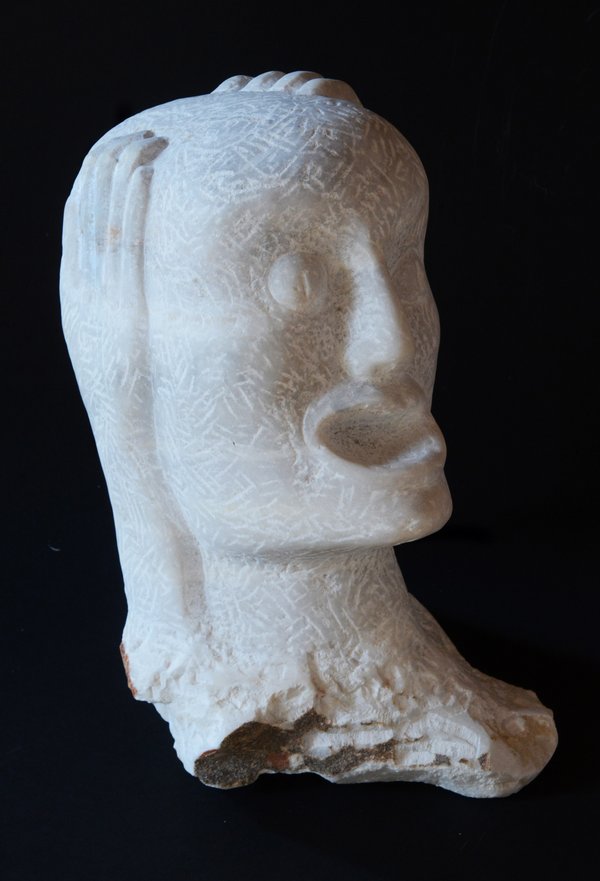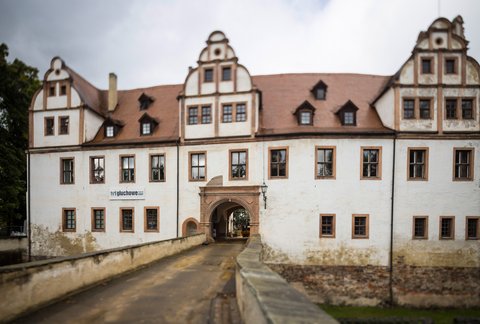
Schloss Forderglauchau
© Staatliche Kunstsammlungen Dresden, Schenkung Sammlung Hoffmann, Foto: Oliver Killig
Kunstverein Gallery director Katarzyna Zierold decided on a work by the video artist Marcel Odenbach after a joint visit to the Sammlung Hoffmann in Berlin. This work by Odenbach touches on a topic with regional importance, while at the same time possessing global relevance. After selecting the work, Katarzyna Zierold invited five local artists to appraise the work from critical perspectives and to produce new pieces in response. The process has resulted in five impressive works that use a wide variety of media to address pressing issues such as flight, pain and demise – issues that Odenbach’s video Unable to Swim in a Shipwreck triggered in them.
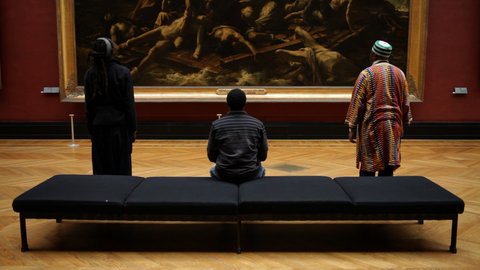
Filmstill aus Marcel Odenbachs "Im Schiffbruch nicht schwimmen können", 2011
© VG Bild-Kunst, Bonn 2022
Odenbach’s video projection from 2011 shows three persons of African origin walking through the deserted exhibition space of the Louvre in Paris until they stop, lost in thought, in front of Théodore Géricault’s painting The Raft of the Medusa from 1819. The painting depicts shipwrecked people on the high seas, at the mercy of their fate, clinging desperately to the sparsely assembled planks of their makeshift raft, which is strewn with dead bodies. Contemporaries immediately understood what Géricault was alluding to when he showed the painting – a large piece measuring five by seven metres – at the Salon in Paris under the unspecific title Shipwreck Scene. Géricault’s history painting addresses the shipwreck of La Méduse, a French frigate, three years earlier off the North African coast during its voyage to Senegal. A raft made of masts drifted on the sea for 13 days, carrying 149 people with inadequate provisions of food and water. When the raft was finally found, only 15 persons had survived the tortuous ordeal. At the time, this cruel, inhumane event – the result of incompetence and irresponsibility which was blamed on the returning regime – provoked outrage in French society. Marcel Odenbach’s work also draws on a strong awareness of the historical-social issues of the time, which he frequently frames in sensual-aesthetic images. It is inevitable that a contemporary contemplation of this work will stir up images and narratives of overloaded and doomed smuggling boats. Now residing in Cologne, Berlin and Cape Coast in Ghana, the artist’s own family biography – cousins of his grandmother’s family lived in the Belgian colony of modern-day Congo – moves the artist to use his works to address the effects and after-effects of European colonialism in Africa.
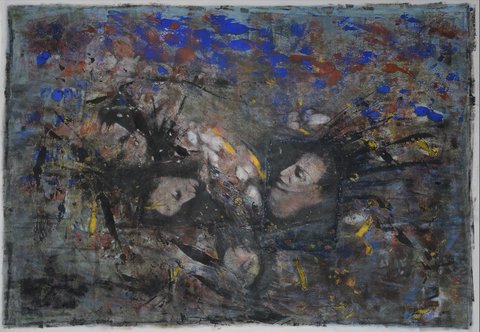
Anja Elze: "That moment", Mischtechnik (2022)
© Anja Elze, Foto: Wiegand Sturm
The five local artists spoke with Katarzyna Zierold about the moments in the film Unable to Swim in a Shipwreck that inspired their work. Born in Lichtenstein, Saxony, in 1975, the artist Anja Elze mentioned the meditative moment in Marcel Odenbach’s film as the inspiration for her painting of female heads that appear to be sinking into a dark whirlpool of colours. For Elze, the three men’s silent contemplation of the painting expresses their own realisation that a ‘shipwreck’ can also occur in a figurative sense, irrespective of one’s origins or putative social status, and that “life can sometimes teach you how to swim without having to be physically confronted by the situation in any real way. You must expect anything if you strike out boldly ... often it turns out well, sometimes it doesn’t ... and either way it will be attributed to ‘fate’. “
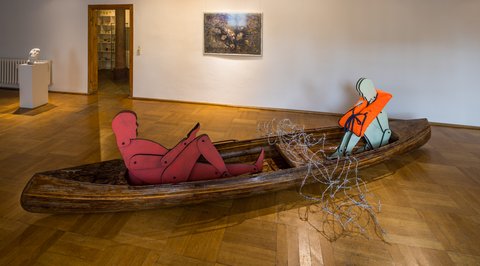
GeBruederOnkel: "Sitzen wir nicht alle im selben Boot?", Installation (2022)
© GeBrueder Onkel @ Staatliche Kunstsammlungen Dresden, Schenkung Sammlung Hoffmann, Foto: Oliver Killig
Aren't We All in the Same Boat? is the question asked by the twin brothers Robby and Marcel Oertel (*1980), who grew up in Glauchau and who, under the synonym GeBruederOnkel, traverse the gallery space with their installation of a wooden boat in which two jointed wooden figures sit opposite each other, reminiscent of marionettes, separated by barbed wire. One figure wearing a life jacket stands for a displaced person and is highlighted in green as a symbol of hope. In their work, the brothers draw attention to the many different causes of flight, among them war and violence, persecution and discrimination, also poverty and lack of prospects due to the destruction of livelihoods caused by climate change. The figure across from Hope is marked in red as an expression of hostile anger. Although living in prosperity and enjoying a seemingly comfortable existence, the figure is also tormented by oppressive fears and worries. Glued to a smartphone, the figure seems recently to have drifted into a maelstrom of hateful comments and apparent fake news. A pawn at the mercy of higher powers, the figure fails to realise that ultimately, “everyone is in the same boat”.
The calm drifting waves of the marble sculpture Drowned Anonymously in the Mediterranean by Erika Harbort (*1954), which was created on the Greek island of Paros, may appear far removed from the vagrancies of the open seas. But the artist – a native of Chemnitz – uses the large worked stone to point to the deceptive nature of tranquillity and the innumerable nameless shipwrecked persons in the Mediterranean. The pendant Scream from the same year – a bust with its eyes and mouth wide open, hands clasped together above the head – undoubtedly expresses the despair in the features of those facing imminent death. What Erika Harbort found so fascinating in Odenbach’s work was the proud stance and demeanours of the three men, despite the assault on their dignity by the history of colonialism, human rights violations and dictatorial systems. Harbort is certain that “no one would leave their country if they saw a future for themselves and their children back home.”
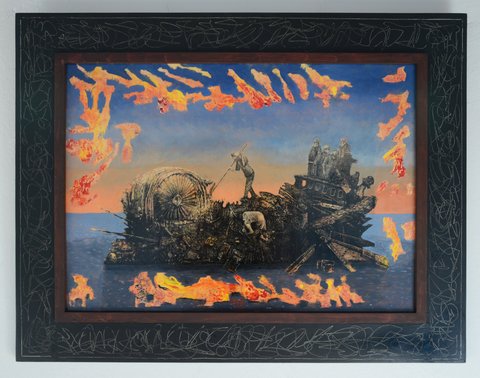
Siegfried Otto Hüttengrund: "Floß der Verdammnis", Öllasurmalerei (2022),
© VG Bild-Kunst, Bonn 2022, Foto: Wiegand Sturm
The Raft of Damnation, a painting by the Hohenstein-Ernstthal-born artist Siegfried Otto Hüttengrund (*1951), depicts a downed aircraft of an aggressor drifting in the vast ocean. Two indefatigable survivors seem to have made a final pitiful effort to shape it into a raft. The calm and deep blue waters are framed by a radiant glow of fire, which immediately makes clear that the group of people who have made it onto the floating wreck are actually doomed. The artist Siegfried Otto Hüttengrund addresses the theme of Unable to Swim in a Shipwreck through the looking glass of the countless wars waged at sea and in the air. The element of water frequently brings the horrors of war to an end and guides the soldiers to their final resting place, the vastness of the oceans.
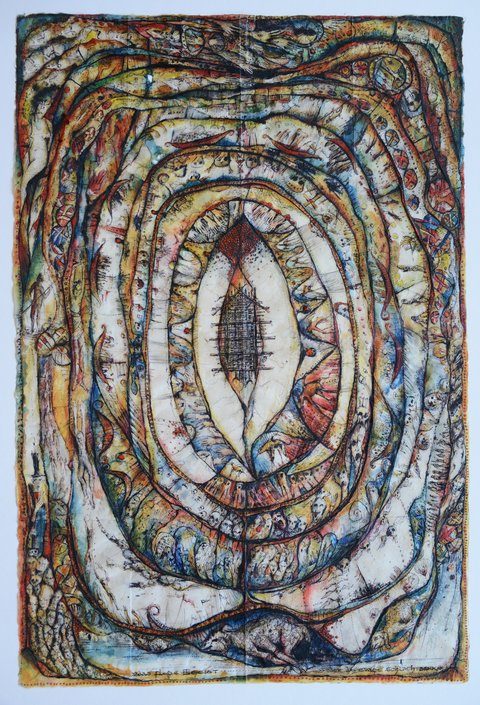
Peter Geist: "Das Floß - oder die ewige Schlachtbank", Mischtechnik auf Kahari-Bütten (2022)
© Peter Geist, Foto: Wiegand Sturm
It was the re-acquaintance with the harrowing painting The Raft of the Medusa (1819) by Theodore Géricault in the film by Marcel Odenbach that stimulated Peter Geist (*1956) to create The Raft – or the Eternal Slaughtering Block (2022). For Geist, who was born in Hohenstein-Ernstthal, the history painting depicts all the unspeakable acts that remain observable today, also in the war in Ukraine. Flight, death, hunger and displacement around the world blend with misery and suffering to form one single image.
For Peter Geist, an artistic response to Marcel Odenbach’s Unable to Swim in a Shipwreck could also have been expressed in a model, a sculpture, an object, a word or a cry. What has emerged here, though, is a small-scale painting which, starting from a barque similar to the one in Dante’s Inferno, takes us on the various journeys into the human abyss. The artist also submitted the following lines, which were created at the same time as the work:
UNABLE TO SWIM IN A SHIPWRECK
UNABLE TO SWIM IN THE WATER
UNABLE TO FLY IN THE AIR
UNABLE TO BURN IN THE FIRE
UNABLE ABLE TO WALK ON EARTH
MUST SWIM
MUST FLY
MUST BURN
MUST WALK
SWIMMING
FLYING
BURNING
WALKING
LIFE
LIFE
LIFE
LIFE
SPIRIT
THE RAFT – OR THE ETERNAL SLAUGHTERING BLOCK
Also of interest:
As time goes by, contemporary art too is aging. Often one has to deal with works that are ephemeral and perishable, as well as time-based media and materials. We’ve spoken to Franziska Klinkmüller, the conservator in charge of the Schenkung Sammlung Hoffmann at the Staatliche Kunstsammlungen Dresden, about the challenges of restoration of contemporary art and aspects related to sustainability.
![[Translate to English:] Ernesto Neto, the house, 2003, exhibition view Sammlung Hoffmann, Berlin](/fileadmin/_processed_/5/e/csm_IMG01_Neto__Ernesto__the_house_SHO__01056_99_9fe9d0bcc4_22a5412168.jpeg)
This year, two installations by the Japanese-born artist Chiharu Shiota from the Schenkung Sammlung Hoffmann collection are on view at Staatliche Kunstsammlungen Dresden. In this interview, she provides insight into her work process and clears up old misconceptions.
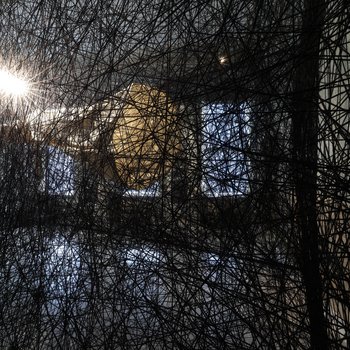
In 2022 and 2023, Staatliche Kunstsammlungen Dresden are fixing their gaze once again on GDR times in their research and exhibition project “Kontrapunkte” (“counterpoints”), funded by the German Federal Cultural Foundation. Based on their own holdings and the history of their collection, fresh perspectives are being developed on art in the GDR, how it was seen and the significance allotted to it in the past and present, with the addition of international viewpoints. To this end, a range of physical and digital formats are in the pipeline, information on which will be provided on this platform.
